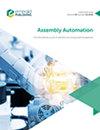基于卷积神经网络的眼动控制系统综述
IF 1.7
4区 计算机科学
Q3 AUTOMATION & CONTROL SYSTEMS
引用次数: 0
摘要
目的本文主要对基于卷积神经网络的眼动控制系统进行综述。细胞神经网络在大数据中的表现推动了眼睛控制系统的发展。因此,对基于细胞神经网络的眼睛控制系统进行综述有助于未来的研究。设计/方法论/方法在本文中,首先,它涵盖了眼睛控制系统的基本原理以及细胞神经网络的基本原理。其次,对标准CNN模型和目标检测模型进行了总结。接下来描述和总结了眼睛控制系统的CNN凝视估计方法和模型。最后,对眼动控制系统凝视估计的进展进行了讨论和展望。Findings眼动控制系统使用凝视估计技术来实现控制效果,该技术关注眼球的特征和信息、眼球运动和凝视等。传统的眼控系统采用瞳孔监测、瞳孔定位、霍夫算法等方法。这项研究将集中在一个基于CNN的眼睛控制系统。首先,作者提出了CNN模型,该模型在图像识别、目标检测和跟踪方面是有效的。此外,基于CNN的眼动控制系统分为三类:语义信息、单目/双目和全脸。最后,讨论了与开发基于CNN的眼睛控制系统相关的三个挑战,以及可能的解决方案。原创性/价值本研究可为眼动控制系统平台提供理论和工程依据。此外,它还总结了前人的思想,以支持未来研究的发展。本文章由计算机程序翻译,如有差异,请以英文原文为准。
Eye control system based on convolutional neural network: a review
Purpose
This paper primarily aims to focus on a review of convolutional neural network (CNN)-based eye control systems. The performance of CNNs in big data has led to the development of eye control systems. Therefore, a review of eye control systems based on CNNs is helpful for future research.
Design/methodology/approach
In this paper, first, it covers the fundamentals of the eye control system as well as the fundamentals of CNNs. Second, the standard CNN model and the target detection model are summarized. The eye control system’s CNN gaze estimation approach and model are next described and summarized. Finally, the progress of the gaze estimation of the eye control system is discussed and anticipated.
Findings
The eye control system accomplishes the control effect using gaze estimation technology, which focuses on the features and information of the eyeball, eye movement and gaze, among other things. The traditional eye control system adopts pupil monitoring, pupil positioning, Hough algorithm and other methods. This study will focus on a CNN-based eye control system. First of all, the authors present the CNN model, which is effective in image identification, target detection and tracking. Furthermore, the CNN-based eye control system is separated into three categories: semantic information, monocular/binocular and full-face. Finally, three challenges linked to the development of an eye control system based on a CNN are discussed, along with possible solutions.
Originality/value
This research can provide theoretical and engineering basis for the eye control system platform. In addition, it also summarizes the ideas of predecessors to support the development of future research.
求助全文
通过发布文献求助,成功后即可免费获取论文全文。
去求助
来源期刊

Assembly Automation
工程技术-工程:制造
CiteScore
4.30
自引率
14.30%
发文量
51
审稿时长
3.3 months
期刊介绍:
Assembly Automation publishes peer reviewed research articles, technology reviews and specially commissioned case studies. Each issue includes high quality content covering all aspects of assembly technology and automation, and reflecting the most interesting and strategically important research and development activities from around the world. Because of this, readers can stay at the very forefront of industry developments.
All research articles undergo rigorous double-blind peer review, and the journal’s policy of not publishing work that has only been tested in simulation means that only the very best and most practical research articles are included. This ensures that the material that is published has real relevance and value for commercial manufacturing and research organizations.
 求助内容:
求助内容: 应助结果提醒方式:
应助结果提醒方式:


